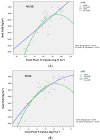Effect of Arbuscular Mycorrhizal Fungi on Nitrogen and Phosphorus Uptake Efficiency and Crop Productivity of Two-Rowed Barley under Different Crop Production Systems
- PMID: 37176966
- PMCID: PMC10181197
- DOI: 10.3390/plants12091908
Effect of Arbuscular Mycorrhizal Fungi on Nitrogen and Phosphorus Uptake Efficiency and Crop Productivity of Two-Rowed Barley under Different Crop Production Systems
Abstract
Arbuscular Mycorrhizal Fungi (AMF) constitute a ubiquitous group of soil microorganisms, affecting plant and soil microorganism growth. Various crop management practices can have a significant impact on the AM association. This study investigated the AMF inoculation contribution on growth and productivity of two-rowed barley crop by identifying the underlying mechanisms both in conventional and organic cropping systems. A two-year field trial was set up as a split-plot design with 2 main plots [AMF inoculation: with (AMF+) and without (AMF-)] and five sub-plots (fertilization regimes: untreated, 100% recommended dose of fertilizer in organic and inorganic form, and 60% recommended dose of fertilizer in organic and inorganic form) in three replications. According to the results, AMF+ plants presented higher plant height and leaf area index (LAI), resulting in increased biomass and, as a result, higher seed yield. With regard to the quality traits, including the nitrogen and phosphorus uptake and their utilization indices, the AMF inoculated plants showed higher values. Furthermore, the level of fertilization, particularly in an inorganic form, adversely affected AMF root colonization. Consequently, it was concluded that substitution of inorganic inputs by organic, as well as inputs reduction, when combined with AMF inoculation, can produce excellent results, thus making barley crop cultivation sustainable in Mediterranean climates.
Keywords: AMF root colonization; Hordeum vulgare subsp. distichum L.; nitrogen harvest index (NHI); nitrogen utilization efficiency (NUtE); phosphorus uptake; seed yield.
Conflict of interest statement
The authors declare no conflict of interest. The funders had no role in the design of the study; in the collection, analyses, or interpretation of data; in the writing of the manuscript; or in the decision to publish the results.
Figures







References
-
- Feddermann N., Finlay R., Boller T., Elfstrand M. Functional diversity in arbuscular mycorrhiza—The role of gene expression, phosphorous nutrition and symbiotic efficiency. Fungal Ecol. 2010;3:1–8. doi: 10.1016/j.funeco.2009.07.003. - DOI
Grants and funding
LinkOut - more resources
Full Text Sources

